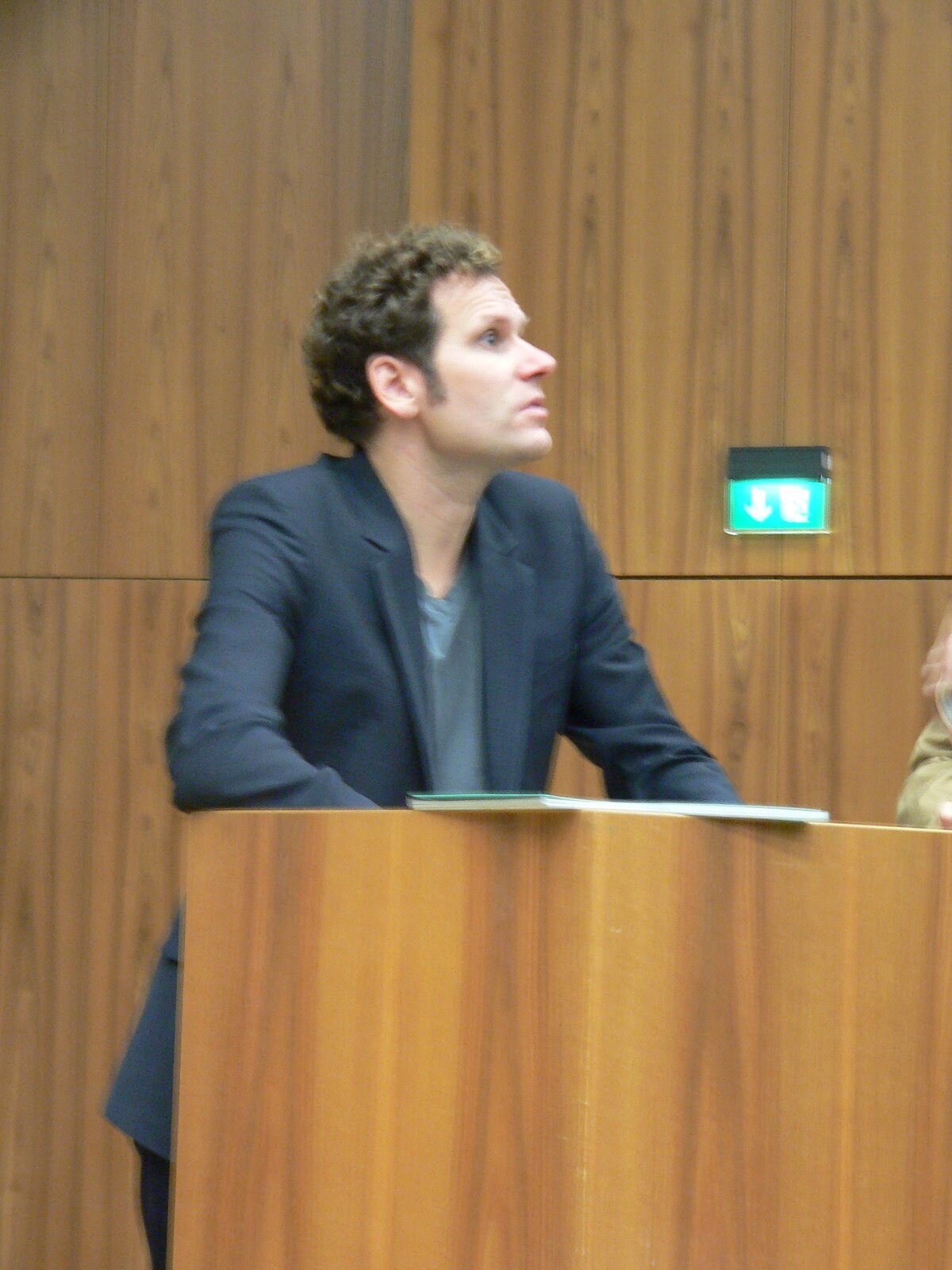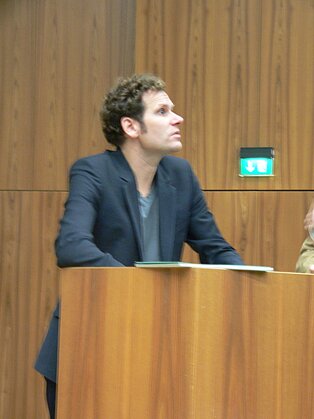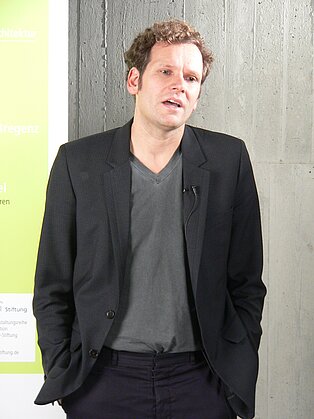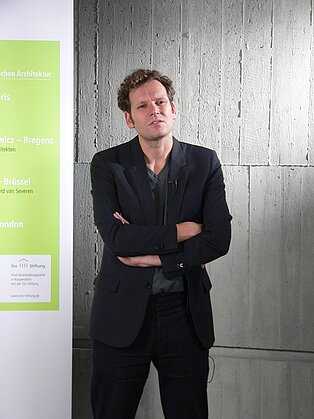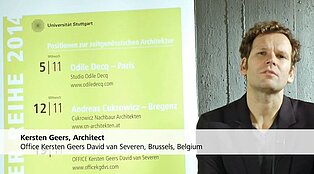Harmonising interior and exterior environments
Stuttgart. The third presentation in this year's November series at the University of Stuttgart was well attended once again. Belgian speaker Kersten Geers from Brussels-based company “OFFICE Kersten Geers David Van Severen” captivated the audience with a rundown of his accomplishments. His young office is renowned for its individual architectural language, which includes particularly unconventional and sometimes even utopian projects.
“What is my intention? What do I want to express and how can I go about this effectively?” These are the questions which play an essential role in shaping the architectural philosophy of Kersten Geers and his business partner David Van Severen. The office is currently focusing heavily on spatial typologies, including how structures change over time or even come back in style. What is both remarkable and unique about the way these architects work is their striking range of collages, which are minimalistic, ambiguous, and sometimes even confusing from a spatial perspective, as is also the case with some of their completed projects. These unconventional images serve to underline the individual character of OFFICE and bring spectators a step closer to their “old-fashioned” design methods.
Armed with his fascinating collages, Kersten succeeded in capturing the audience's attention and providing an insight into his truly unique world of architectural perceptions. He started by presenting a holiday home in the town of Merchtem, Flanders. Full use had been made of the long back yard to the existing terrace with the addition of a new, open-plan building. Tapping directly into the existing building, the extension formed a series of four equal spaces. Yet whilst they were identical in size, the spaces couldn't have been more different in terms of their functions, as the architects had managed to squeeze a garden, pool area, courtyard, and even a living room into the tiny plot. Large wall openings with concealed sliding doors establish a smooth transition between the interior and exterior to create a unique, loft-like feel. The flexible glass roof can also be adjusted to make the best possible use of the interiors in the warm summer months.
Kersten then presented a project from 2010: a villa located near Buggenhout, between Brussels and Antwerp. This distinctive, free-standing building lies between woodland and farmland, and blurs the lines connecting the indoors and out. Surrounded by nature, the two-storey residential building is supported by a steel construction at the sides of the ground floor, similar to a pergola. This also serves to allow plants to climb the structure, creating a fluid transition between the private outer area and the public open space. This intense interaction with the existing elements is reinforced by large sliding glass doors, which make it possible to open up the entire ground-floor space. In fact, it isn't until the second, third, or even fourth glance that it's even possible to distinguish between the interior and exterior areas. This deliberate fusion, this “art” of absorbing the surroundings, can also be seen in the remaining buildings presented by Kersten.
One of these remaining projects really highlighted the utopian outlook of the young architecture office. In an untouched forest in Matarrana, just south of Barcelona, OFFICE is currently working on a summer house which couldn't be more out of the ordinary. In keeping with the local scenery, the architects designed a building intended to make a real impact on the surrounding landscape. A circular glass facade curves around a large, planted courtyard. The various sliding elements mean the occupants can open up the entire side of the living area facing the forest. The new building is sympathetically designed to work in harmony with both the existing structure and the surrounding nature.
But the company's portfolio extends far beyond residential buildings. With the “Drying Hall” warehouse at a tree plantation company in Herstelt, Kersten showcased a minimalist construction at the heart of a field of potted plants. With its perforated facade, the compact structure allows enough air to enter the interior whilst the closed roof protects the plants against rainfall. This ensures that the miniature trees have the necessary 24 hours of drying time before transportation. The perforations also serve to lend the industrial building an unimposing feel, whilst subtly revealing the silhouettes of the temporarily protected plants and hinting at the spacious surroundings. This project is yet another clear example of how effectively Kersten Geers and David Van Severen are able to combine interiors and exteriors whilst sympathetically incorporating existing structures.
More information on the projects described can be found on the company's home page
Pinterest account showing completed projects
More information on OFFICE's profile and identity can be found at BauNetz
Link to a video of the company's current projects
Kersten GeersDie Verbindung von Innen und Außen (Video clip| 1:31 Min.)


